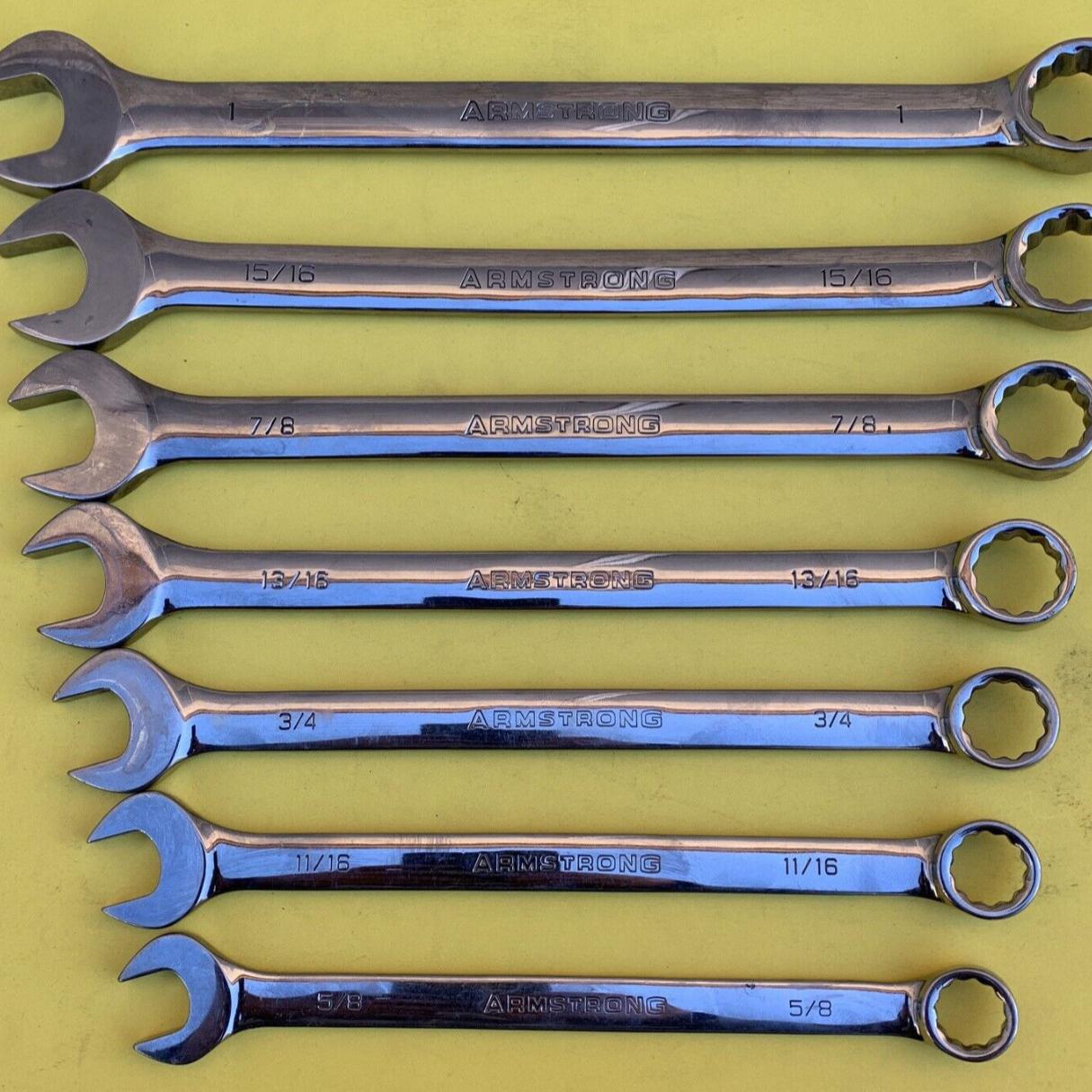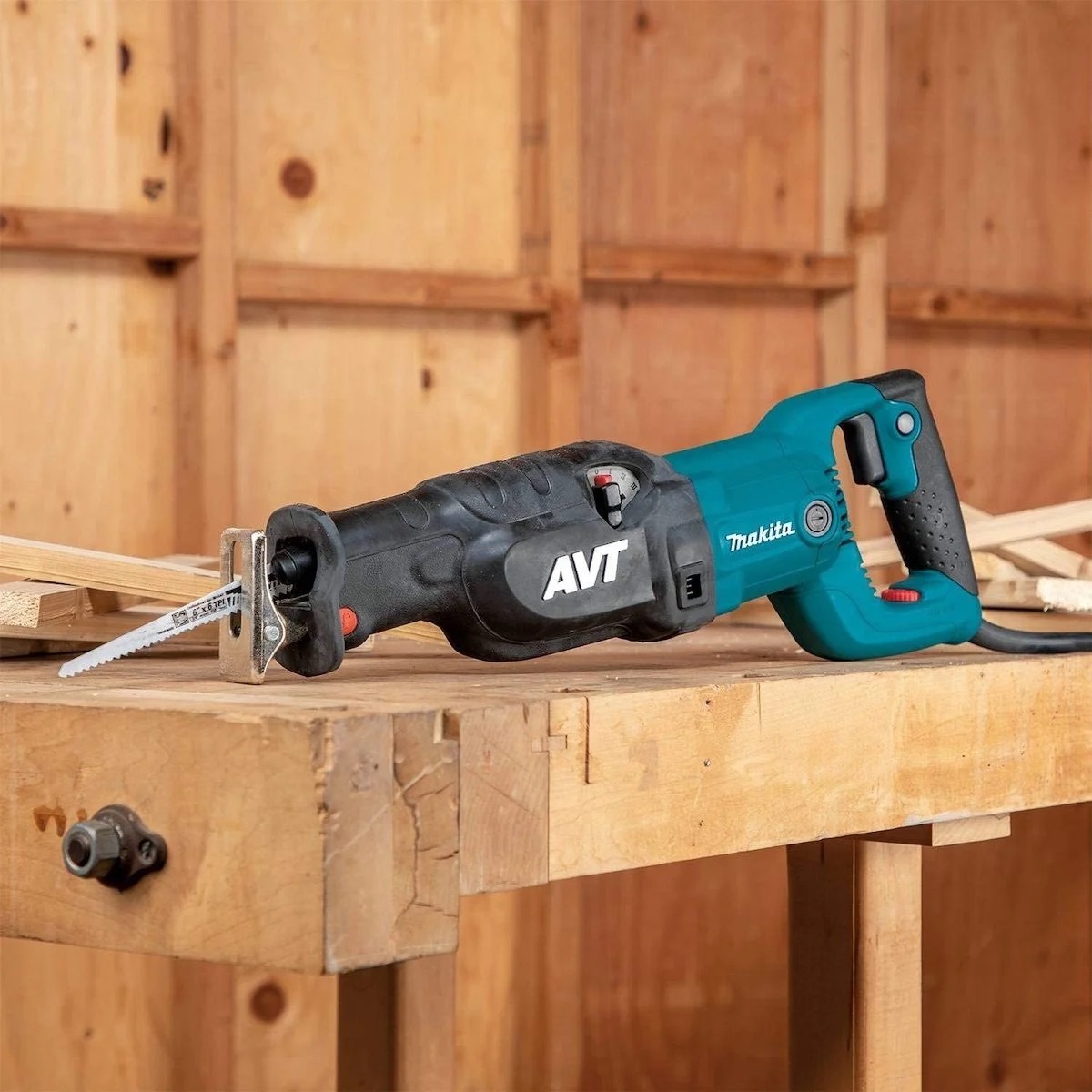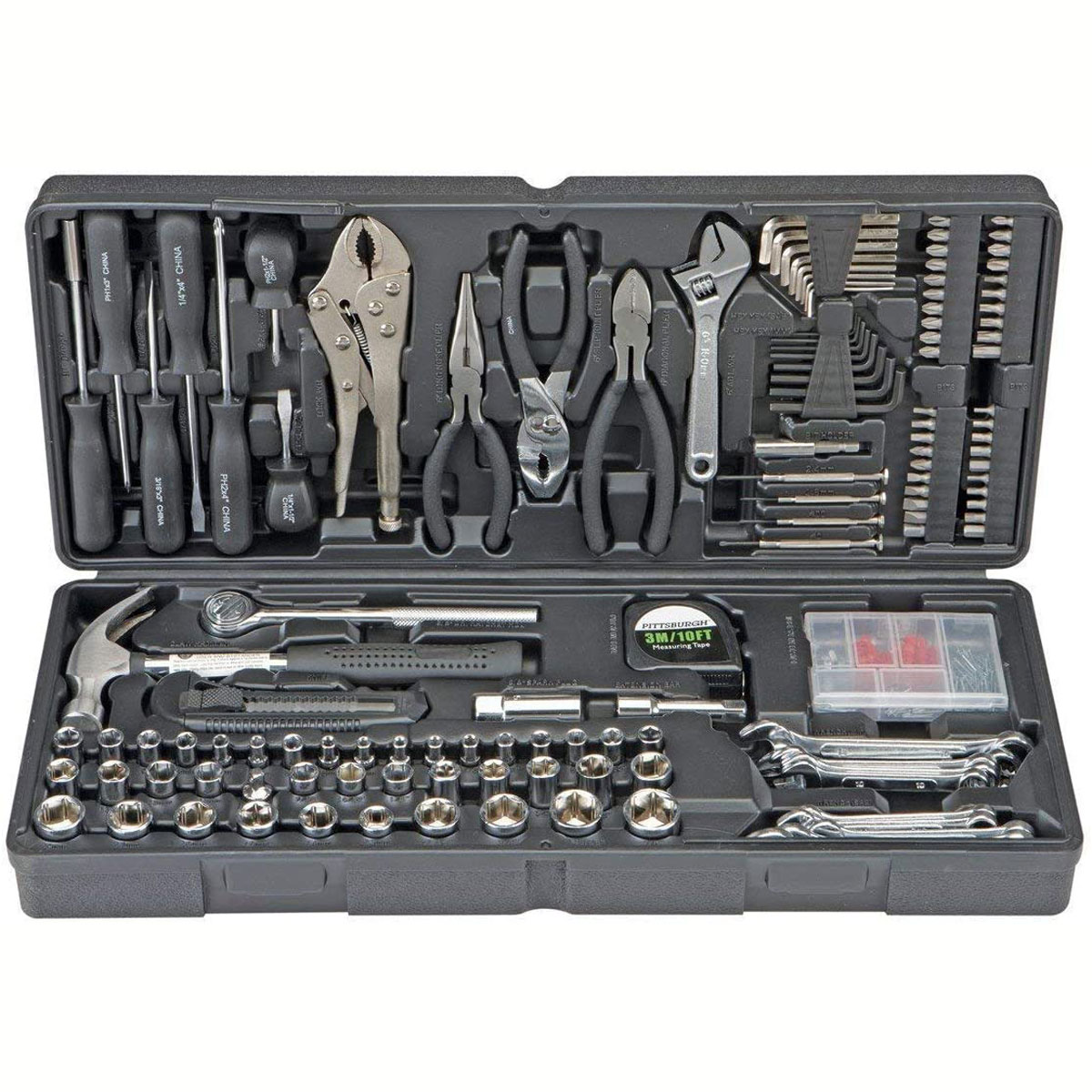

Articles
Where Do I Find Hand Tools For Osha Training
Modified: October 20, 2024
Looking for articles on Osha training and where to find the hand tools module within VMware? Find all the information you need right here!
(Many of the links in this article redirect to a specific reviewed product. Your purchase of these products through affiliate links helps to generate commission for Storables.com, at no extra cost. Learn more)
Introduction
Welcome to the world of OSHA training in the VMware environment! As technology continues to advance, it is crucial for organizations to prioritize safety in the workplace, especially when it comes to operating in virtualized environments like VMware. OSHA, short for Occupational Safety and Health Administration, sets guidelines and regulations to ensure safe working conditions for employees.
When it comes to OSHA training in the VMware environment, one area that often requires attention is the proper use of hand tools. Hand tools play a vital role in maintaining and troubleshooting various components of VMware infrastructure, from servers to networking equipment. Proper training in the use of these tools not only ensures efficiency and productivity but also minimizes the risk of accidents and injuries.
In this article, we will explore the importance of OSHA training in the VMware environment and delve into the specifics of the hand tools module. We will discuss the various hand tools covered in the training, their types and uses in the VMware environment, as well as the recommended procedures for their safe handling. Additionally, we will highlight the significance of regular maintenance and inspections to keep hand tools in optimal condition.
So without further ado, let’s dive into the world of OSHA training in the VMware environment and discover the important role hand tools play in ensuring a safe and efficient working environment.
Key Takeaways:
- OSHA training in the VMware environment is crucial for preventing accidents, promoting efficiency, and ensuring compliance. The hand tools module equips employees with the skills to handle tools safely and effectively.
- Regular maintenance and inspections of hand tools are essential for maximizing efficiency, preventing accidents, and complying with safety regulations in the VMware environment. Prioritizing safety and training creates a culture of safety.
Read more: Where Do I Find The Alexa App
Importance of OSHA Training in the VMware Environment
OSHA training is of utmost importance in any work environment to ensure the safety and well-being of employees. However, in the VMware environment, where virtualization technology is heavily employed, it is crucial to have specialized training that addresses the unique challenges and risks associated with this environment.
One of the primary reasons why OSHA training is essential in the VMware environment is to prevent accidents and injuries. Virtualization technology involves working with complex systems and infrastructure, including servers, networking equipment, and data centers. Without proper training, employees may lack the knowledge and understanding of how to handle these elements safely and effectively.
OSHA training in the VMware environment provides employees with the necessary skills and knowledge to identify potential hazards, assess risks, and implement appropriate safety measures. This includes understanding the proper use of hand tools, such as screwdrivers, pliers, and cable cutters, which are commonly used in virtualized environments. By ensuring that employees are trained in the correct procedures for using these tools, organizations can significantly reduce the risk of accidents, which can result in both physical harm and costly downtime.
In addition to preventing accidents, OSHA training also promotes efficiency and productivity in the VMware environment. By understanding the proper techniques for using hand tools, employees can accomplish tasks more effectively, leading to improved workflow and reduced downtime. This can have a significant impact on the overall performance of the organization, as well as customer satisfaction.
Furthermore, OSHA training helps organizations meet compliance requirements and avoid legal issues. Failure to comply with OSHA regulations can result in severe consequences, including fines and penalties, as well as damage to the reputation of the organization. By providing comprehensive OSHA training in the VMware environment, organizations demonstrate their commitment to maintaining a safe and compliant workplace.
Overall, OSHA training in the VMware environment is vital for the safety, efficiency, and compliance of organizations. It equips employees with the necessary skills and knowledge to handle the unique challenges and risks associated with virtualization technology. By investing in OSHA training, organizations can create a safe working environment, prevent accidents and injuries, and ensure the smooth operation of their VMware infrastructure.
Identifying the Need for Hand Tools in OSHA Training
When it comes to OSHA training, hand tools are an integral part of the curriculum, particularly in the VMware environment. Hand tools are used extensively in various tasks, including equipment maintenance, repair, and installation. Understanding the need for hand tools in OSHA training is crucial for ensuring the safety and efficiency of operations.
First and foremost, hand tools are essential for maintaining, repairing, and troubleshooting VMware infrastructure. In a virtualized environment, organizations rely on servers, networking equipment, and other hardware components to provide the necessary resources for their virtual machines. Over time, these components may require routine maintenance or repairs due to wear and tear. OSHA training equips employees with the knowledge and skills to use hand tools effectively and safely for these tasks.
Another reason for the inclusion of hand tools in OSHA training is their role in equipment installation. When setting up and configuring VMware infrastructure, various components need to be physically installed and connected. Hand tools such as screwdrivers, wrenches, and cable cutters are commonly used to secure screws, tighten connections, and cut cables to the desired length. Proper training ensures that employees understand how to use these tools correctly, reducing the risk of equipment damage and ensuring the stability and reliability of the virtualized environment.
Furthermore, hand tools are necessary for handling equipment upgrades and expansions in the VMware environment. As organizations scale their virtualized infrastructure, they may introduce new servers, networking devices, or storage systems. The proper use of hand tools is crucial during the installation and integration process to ensure compatibility, proper connections, and optimal performance.
Hand tools also play a role in ensuring a safe working environment. OSHA training emphasizes the importance of using hand tools correctly and following safety protocols to minimize the risk of accidents and injuries. By incorporating hand tool training, organizations can promote a safety culture, empowering employees with the knowledge and skills to handle tools safely, select the appropriate tool for the task at hand, and use them in the correct manner.
In summary, the need for hand tools in OSHA training is evident in the VMware environment. From maintenance and repair tasks to equipment installation and expansion, hand tools are essential for ensuring the smooth operation of virtualized infrastructure. Moreover, their proper use promotes a safe working environment and reduces the risk of accidents and injuries. Including hand tools in OSHA training equips employees with the necessary skills to handle these tools effectively, enhancing the overall safety and efficiency of operations in the VMware environment.
Understanding the Hand Tools Module in OSHA Training
The hand tools module in OSHA training focuses on providing comprehensive knowledge and skills related to the proper use, handling, and maintenance of hand tools in the VMware environment. This module is designed to equip employees with the necessary expertise to work safely and efficiently with hand tools in various tasks, including equipment maintenance, repair, and installation.
The hand tools module covers a range of topics to ensure a thorough understanding of the tools used in the VMware environment. It starts by introducing the different types of hand tools commonly used, such as screwdrivers, pliers, socket wrenches, cable cutters, and more. Each tool is explained in detail, including its purpose, features, and variations.
In addition to the specific tools, the module also covers general safety guidelines for working with hand tools. This includes topics such as selecting the right tool for the task, inspecting tools for damage or defects before use, and using personal protective equipment (PPE) when necessary. Proper technique and posture while using hand tools are also emphasized to prevent strain or repetitive motion injuries.
Furthermore, the hand tools module addresses the importance of maintaining and caring for hand tools. Regular cleaning, oiling, and sharpening of tools are essential to ensure their longevity and optimal performance. Proper storage practices are also discussed to prevent damage and accidents, such as keeping tools organized and securely stored when not in use.
Hands-on training is a key component of the hand tools module in OSHA training. Employees are provided with practical exercises to apply their knowledge and skills in a controlled environment. This may include simulated scenarios where they practice using hand tools to perform common tasks in the VMware environment, such as installing server components or tightening network cables.
Throughout the module, emphasis is placed on the importance of following manufacturer’s instructions and OSHA regulations when using hand tools. Employees are encouraged to read and understand tool manuals, as well as adhere to the specific guidelines provided by the manufacturer to ensure safe and proper tool usage.
By the end of the hand tools module, employees will have a comprehensive understanding of the various hand tools utilized in the VMware environment, as well as the necessary safety measures and maintenance practices to ensure their effective and safe use. This knowledge empowers employees to handle tasks requiring hand tools confidently, efficiently, and with a strong emphasis on workplace safety.
Overview of Hand Tools Covered in the Module
The hand tools module in OSHA training covers a wide range of tools that are commonly used in the VMware environment for equipment maintenance, repair, and installation. Let’s explore the key hand tools that are covered in this module:
- Screwdrivers: Screwdrivers are essential tools for tightening or loosening screws. They come in various types and sizes, including flathead, Phillips, and Torx, to accommodate different screw heads.
- Pliers: Pliers are versatile hand tools used for gripping, bending, and twisting materials. They are available in different types, such as combination, needle-nose, and slip-joint pliers, each designed for specific tasks.
- Socket Wrenches: Socket wrenches are used to tighten or loosen nuts and bolts. They consist of a handle and interchangeable socket attachments in different sizes to fit various bolt heads.
- Cable Cutters: Cable cutters are designed for cutting and trimming cables and wires. They have sharp jaws and durable handles to handle different cable diameters.
- Wire Strippers: Wire strippers are used to remove insulation from electrical wires for proper connection. They have cutting edges and adjustable gauges to accommodate different wire sizes.
- Multimeter: A multimeter is an electronic device used to measure voltage, current, and resistance. It allows technicians to troubleshoot electrical issues and ensure proper connectivity.
- Labeling Tools: Labeling tools, such as label makers or markers, are used to identify cables, ports, and equipment. Clear labeling helps in troubleshooting, maintenance, and organization.
- Tape Measure: A tape measure is a flexible tool used to measure distances and dimensions accurately. It is essential for precise installation and alignment of equipment.
- Utility Knife: Utility knives are versatile cutting tools used for various tasks, such as opening packages and stripping insulation. They have retractable blades for safety and convenience.
These are just a few examples of the hand tools covered in the module, providing employees with a solid foundation of knowledge and skills to effectively utilize them in the VMware environment. Each tool’s purpose, features, proper handling techniques, and safety precautions are thoroughly explained to ensure safe and efficient use.
It is important to note that the hand tools covered in the module may vary depending on the specific requirements and equipment used in an organization’s VMware environment. However, the foundation and principles taught in the module are applicable to a wide range of hand tools, enabling employees to adapt their skills to handle different tools and tasks as needed.
With this comprehensive overview of hand tools, employees gain the necessary expertise to handle various maintenance, repair, and installation tasks in the VMware environment, enhancing productivity, minimizing risks, and ensuring a safe working environment.
When looking for OSHA training on VMware for hand tools module, check the official OSHA website or accredited training providers for specific courses and materials.
Read more: Where Can I Sell Used Hand Tools
Types and Uses of Hand Tools in the VMware Environment
In the VMware environment, various types of hand tools are utilized for a range of tasks, from equipment maintenance to installation and repair. Understanding the different types and their specific uses is crucial for efficient and safe operations. Let’s explore the common types of hand tools and their applications in the VMware environment:
- Screwdrivers: Screwdrivers are essential for tightening or loosening screws commonly found in servers, networking equipment, and other hardware components. They come in different sizes and types, such as flathead, Phillips, and Torx, to accommodate different screw heads.
- Pliers: Pliers are versatile tools used for gripping, bending, and twisting materials. They are commonly employed in the VMware environment for tasks such as crimping connectors, gripping small components, and cutting wires.
- Socket Wrenches: Socket wrenches are indispensable for tightening or loosening nuts and bolts in servers, racks, and other equipment. They come in various sizes and are essential for assembling and disassembling hardware components quickly and effectively.
- Cable Cutters: Cable cutters are specifically designed for cutting and trimming cables and wires. They are essential for proper cable management, ensuring clean and precise cuts without damaging the integrity of the cables.
- Wire Strippers: Wire strippers are used to remove insulation from electrical wires, allowing for proper connection and termination. They are invaluable tools for tasks involving cable management, repair, and maintenance.
- Multimeter: A multimeter is an indispensable tool for measuring voltage, current, and resistance within the VMware environment. It enables technicians to troubleshoot electrical issues, ensure proper connectivity, and perform accurate electrical measurements.
- Labeling Tools: Labeling tools, such as label makers or markers, play a crucial role in labeling cables, ports, and equipment. They assist in maintaining clarity and organization within the VMware infrastructure, facilitating easy identification and troubleshooting.
- Tape Measure: A tape measure is a valuable tool for measuring distances and dimensions accurately in the VMware environment. It is essential for tasks such as aligning equipment, ensuring proper spacing, and determining suitable rack or cabinet sizes.
- Utility Knife: Utility knives are versatile cutting tools used for various tasks, such as opening packages, stripping insulation, and other light cutting needs within the VMware environment. They offer convenience and versatility for technicians working with different materials.
These are just a few examples of the hand tools commonly used in the VMware environment. The specific types and their applications may vary based on the organization’s infrastructure and requirements. However, these tools form the foundation for performing maintenance, repair, and installation tasks effectively and safely.
By understanding the types and uses of hand tools in the VMware environment, employees can select the appropriate tool for the task at hand and utilize them with precision and confidence. This knowledge ensures the smooth operation and longevity of the VMware infrastructure, minimizing downtime and promoting a safe working environment.
Ensuring Safety while Using Hand Tools in VMware
When using hand tools in the VMware environment, safety should always be the top priority. Mishandling or improper use of tools can lead to accidents, injuries, and damage to equipment. Here are some essential practices to ensure safety while using hand tools in VMware:
- Proper Training: Ensure that all employees receive proper training in the correct use of hand tools. This includes understanding tool functionality, safety precautions, and proper handling techniques. Regular refresher courses can also help reinforce safety practices.
- Personal Protective Equipment (PPE): Use the appropriate personal protective equipment, such as safety glasses, gloves, or ear protection, depending on the task at hand. PPE helps protect against potential hazards, such as flying debris, sharp edges, or loud noises.
- Inspect Tools: Regularly inspect hand tools before use to ensure they are in good working condition. Check for any signs of damage, such as cracked handles, loose parts, or dull cutting edges. Damaged tools should be replaced or repaired promptly.
- Choose the Correct Tool: Use the appropriate tool for the specific task. Trying to use a tool that is not designed for the job can lead to accidents and damage. Always refer to the manufacturer’s instructions or consult with a supervisor if unsure about the appropriate tool to use.
- Maintain a Clean Work Area: Keep the work area clean and free from clutter. Remove any unnecessary items that could obstruct movement or cause accidents. This helps prevent accidents and makes it easier to handle tools safely.
- Secure Workpiece: When using hand tools, ensure the workpiece is properly secured. This can be done using clamps or other appropriate methods. A secure workpiece reduces the risk of slipping or unexpected movements, ensuring safer tool operation.
- Use Proper Techniques: Follow proper techniques for tool use to avoid strain or injuries. This includes using the correct grip, maintaining stable footing, and applying pressure in the right direction. Improper techniques can lead to injuries or damage to the workpiece.
- Store Tools Safely: When not in use, store hand tools in designated areas or toolboxes. This helps prevent accidental tripping, damage to tools, and unauthorized access, ensuring a safer work environment.
- Communicate and Collaborate: Encourage communication and collaboration among employees when working with hand tools. Sharing knowledge and experiences can help identify potential risks or hazards and promote a culture of safety in the workplace.
- Report and Address Hazards: If any potential hazards or unsafe conditions are identified, report them to the appropriate authority immediately. Timely reporting and addressing of hazards help create a safer work environment for everyone.
By following these safety practices, employees can minimize the risk of accidents while using hand tools in the VMware environment. Implementing a strong safety culture and providing ongoing training and reminders can further enhance the safety measures in place. Remember, safety should always take precedence when using hand tools, ensuring the well-being of employees and the smooth operation of the VMware infrastructure.
Recommended Procedures for Handling Hand Tools
Proper handling of hand tools is crucial to ensure safety and efficiency in the VMware environment. Adhering to recommended procedures can help prevent accidents, maintain tool longevity, and promote a productive work environment. Here are some important procedures to follow when handling hand tools:
- Inspect Tools: Before using any hand tool, inspect it for any signs of damage or wear. Check that handles are secure, cutting edges are sharp, and moving parts are in proper working condition. Do not use damaged or defective tools.
- Clean Tools: Keep hand tools clean and free of debris or buildup. Wipe them down using a dry cloth after each use and apply a light coat of oil or rust inhibitor to prevent corrosion. Proper tool maintenance helps ensure optimal performance and extends tool life.
- Use the Right Tool for the Job: Select the appropriate hand tool for the specific task at hand. Using the wrong tool can lead to inefficiency, accidents, or damage to the tool and equipment. Consult tool manuals or ask for guidance if uncertain about the correct tool to use.
- Apply Proper Ergonomics: When using hand tools, maintain a comfortable and ergonomic posture. Avoid excessive force or awkward positions that may lead to strain or repetitive motion injuries. Use both hands when necessary for better control and stability.
- Secure Workpiece: Ensure the workpiece is properly secured before using hand tools. Use clamps, vises, or other appropriate methods to prevent movement or slipping. A securely held workpiece minimizes the risk of accidents and improves accuracy.
- Follow Correct Techniques: Use hand tools according to the recommended techniques. Follow proper cutting, gripping, or twisting motions as instructed. Never use excessive force or try to modify tools to fit a specific task. Improper techniques can result in accidents or damage to the tool.
- Store Tools Safely: After use, store hand tools in a designated location or toolbox. Keep them organized and separate from other tools or materials to prevent damage. Store sharp tools with blade guards or in appropriate cases to minimize the risk of injuries.
- Transport Tools Safely: When moving hand tools from one location to another, use appropriate tool bags or cases to ensure safe transport. Avoid carrying tools loosely or in a way that may cause accidents or injuries to yourself or others.
- Keep Focus and Minimize Distractions: When handling hand tools, maintain your focus and concentration on the task at hand. Avoid distractions that may compromise your safety or result in errors. If interrupted, safely set down the tool before addressing the distraction.
- Report Damaged Tools: If you notice any damage, wear, or malfunction in a hand tool, report it immediately to the appropriate authority. Do not use damaged tools, as they can pose a safety risk. Prompt reporting ensures timely replacement or repair.
By following these recommended procedures for handling hand tools, employees can ensure safe, effective, and efficient work in the VMware environment. Regular training, ongoing reinforcement, and a commitment to maintaining a culture of safety will further enhance the implementation of these procedures. Remember, proper handling of hand tools not only ensures your safety but also contributes to the success and productivity of the VMware infrastructure.
Importance of Regular Maintenance and Inspections
Regular maintenance and inspections are essential in the VMware environment to ensure the optimal performance and longevity of hand tools. By incorporating these practices, organizations can minimize downtime, prevent accidents, and maximize the efficiency of their operations. Here is why regular maintenance and inspections are crucial:
- Tool Performance: Regular maintenance helps keep hand tools in peak condition, ensuring their optimal performance. Cleaning tools, lubricating moving parts, and sharpening cutting edges improve their functionality and efficiency. Maintaining tools regularly allows technicians to accomplish tasks more effectively, reducing the chances of equipment damage and errors.
- Equipment Longevity: Hand tools are investments for organizations, and regular maintenance prolongs their lifespan. Inspections help identify signs of wear, damage, or parts that require replacement. By addressing these issues promptly, organizations can avoid costly repairs or replacements and ensure that their tools remain functional and reliable over time.
- Preventing Accidents: Regular maintenance and inspections can prevent accidents and injuries in the workplace. Damaged or defective tools are a safety hazard. Regular inspections help identify these issues before they can lead to accidents. Additionally, maintaining sharp cutting edges, properly functioning hinges, and secure handles reduces the risk of accidents during tool use.
- Compliance with Regulations: Implementing regular maintenance and inspections ensures compliance with safety regulations, including those set by OSHA. Adhering to these regulations not only mitigates legal risks but also demonstrates the organization’s commitment to creating a safe working environment for employees.
- Improved Efficiency: Well-maintained tools contribute to improved efficiency and productivity. Tools that are regularly inspected, cleaned, and lubricated operate smoothly, minimizing delays and disruptions. This, in turn, enhances the overall workflow and output of employees working in the VMware environment.
- Early Detection of Issues: Regular inspections enable early detection of potential issues with hand tools. Loose handles, worn-out parts, or signs of corrosion can be identified and addressed before they worsen or cause more significant problems. Early detection ensures timely repairs or replacements, avoiding unexpected breakdowns or disruptions in operations.
- Documentation and Accountability: Regular maintenance and inspections create a documented record of the condition of hand tools. This helps organizations track the history of their tools, monitor the frequency of maintenance, and ensure accountability for their proper care. Documentation can also aid in identifying trends or patterns related to tool performance and maintenance needs.
In summary, regular maintenance and inspections are vital for the VMware environment to ensure the optimal performance and safety of hand tools. By proactively maintaining tools, organizations can prevent accidents, maximize efficiency, extend tool lifespans, and remain compliant with safety regulations. Integrating these practices into the standard operating procedures of the organization helps create a safe and reliable work environment, benefiting both employees and the overall success of the VMware infrastructure.
Read more: Where Can I Buy Sk Hand Tools
Conclusion
In the world of OSHA training in the VMware environment, the proper use and handling of hand tools are critical for maintaining a safe and efficient working environment. The importance of OSHA training and the inclusion of a dedicated hand tools module cannot be overstated.
OSHA training in the VMware environment ensures that employees are equipped with the necessary skills and knowledge to identify potential hazards, assess risks, and implement safety measures when working with hand tools. This training not only prevents accidents and injuries but also promotes productivity, compliance with regulations, and efficiency.
The hand tools module in OSHA training provides a comprehensive overview of various types of hand tools, their uses, and best practices for their safe and effective handling. Through hands-on training, employees gain practical experience in using these tools, improving their confidence and competence.
By understanding the specific types and uses of hand tools in the VMware environment, employees can select the appropriate tool for the task at hand, ensuring efficiency and minimizing the risk of accidents. Adhering to recommended procedures for handling hand tools, such as inspecting tools before use, using proper techniques, and storing tools safely, further enhances workplace safety.
Regular maintenance and inspections of hand tools are crucial for their optimal performance, longevity, and prevention of accidents. By implementing these practices, organizations can prolong tool lifespan, improve efficiency, and comply with regulations. Additionally, regular maintenance allows for early detection of issues, preventing unexpected breakdowns and disruptions in operations.
In conclusion, incorporating OSHA training, including a dedicated hand tools module, is vital for organizations operating in the VMware environment. Through comprehensive training, employees gain the knowledge, skills, and understanding necessary to use hand tools safely and effectively. By prioritizing safety, regular maintenance, and inspections, organizations can create a culture of safety, enhance productivity, and ensure the success of their VMware infrastructure.
Frequently Asked Questions about Where Do I Find Hand Tools For Osha Training
Was this page helpful?
At Storables.com, we guarantee accurate and reliable information. Our content, validated by Expert Board Contributors, is crafted following stringent Editorial Policies. We're committed to providing you with well-researched, expert-backed insights for all your informational needs.














0 thoughts on “Where Do I Find Hand Tools For Osha Training”